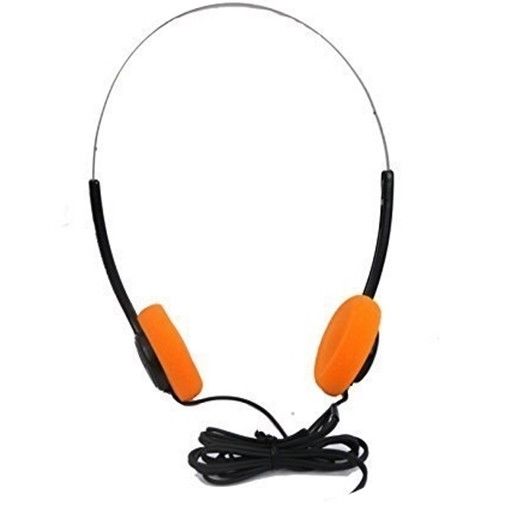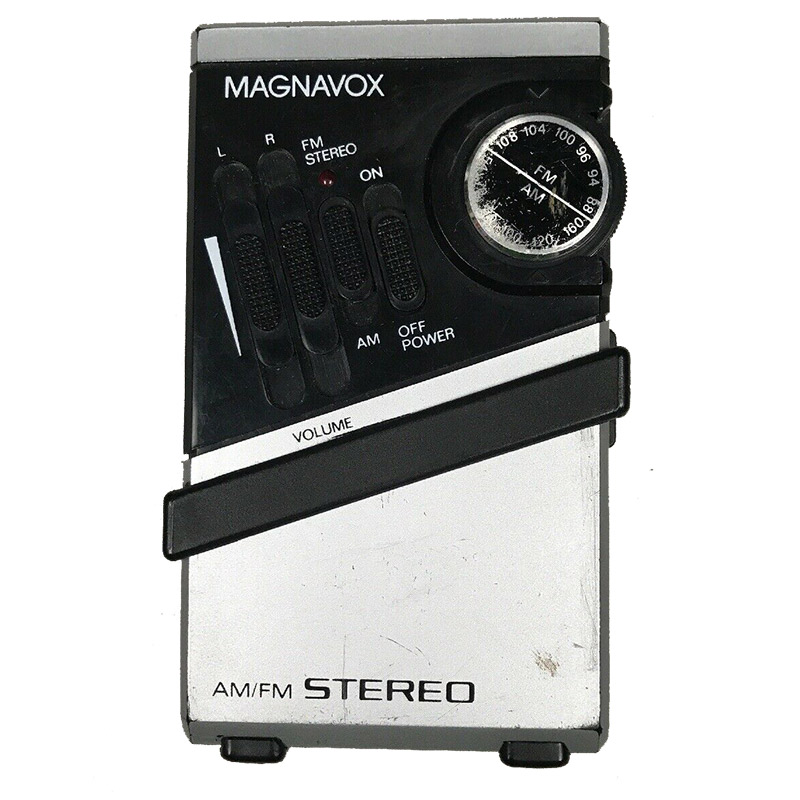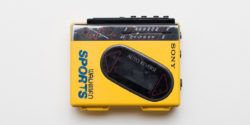The Sony Walkman celebrated its 40th birthday on Monday, July 1. While portable audiocassette recorder/players that you could connect to headphones had been around pretty much since the invention of the medium, the Walkman was the first one designed specifically for stereo playback on the go, for personal listening, without even a tiny speaker.
Although the Walkman is principally a cassette device, I’ve always associated it with radio. Sure, in some ways it’s almost anti-radio, giving the person on-the-go a completely individualized listening experience. The first model lacked a tuner, but it wouldn’t be long until a receiver became almost standard.
A child of the 80s, I remember lusting after a Walkman, though the first generations were priced well beyond the reach of a pre-teen. Around 1983 or 1984 nearly every electronics manufacturer made its own version, and by then I managed to save up about 25 bucks, enough to buy the bottom-of-the-line Sanyo knock-off.
As I recall, the Sanyo was on the bulky side, with just three buttons: play, stop and fast-forward. Rewind was too sophisticated for such an inexpensive device (worth about $60 in today’s dollars). If you needed to rewind you flipped the cassette over and fast-forwarded the opposite side. But it did come with those iconic cheap 80s headphones with the orange ear cushions (as seen in “Guardians of the Galaxy”).

I might have wanted one with a radio, but the extra five or ten bucks would have been too much of a stretch for this middle-schooler.
Thanks to the Pocket Calculator Show’s extensive archive directories of portable stereos I’ve concluded I had likely had the Sanyo M-G7, without radio. The lack of receiver would be supplemented by a Magnavox D1600 tiny portable AM/FM radio I received as a birthday gift. Back then I think we’d have called it a “Walkman radio,” since it didn’t have a speaker, intended only for headphone listening.

Radios like this were directly influenced by the Walkman. Tiny transistor radios had been around a couple of decades by the early 80s, and most included an earphone jack for discreet listening. But they almost always had a tinny speaker intended for most of the listening, offering overall a mono, low-fidelity experience.
New breed Walkman-style radios were headphone-only, and much tinier. That Magnavox was the size of a deck of cards, only about one-third as thick. Plus, it offered FM stereo. Though, in reality, because the headphone cable doubled as the antenna, you had to find a really strong signal to get that stereo light to go on. Even so, sometimes even the slightest movement could kill it.
It wasn’t long after getting that first Sanyo player that I desired an upgrade that was smaller, sounded better and might even rewind tapes. Thereafter every Walkman-style player I’d get would have a radio – never would I have considered one without it. That’s not just because I’m a life-long radio nerd.
Sometimes you’d get tired of the one or two tapes you have with you, and want to hear something different. Or I’d want to catch a specific show while on the school bus or out walking. Also, in the days before good rechargeable batteries, often the radio still worked decently even when worn-down batteries made Metallica sound like Leonard Cohen.
Though Walkman is a Sony trademark, the only actual Sony model I ever owned was one a heavy-duty, water-proof, bright yellow Sports Walkman from the early 90s. As it turned out, that would be my last one, for all intents and purposes. Though I’ve owned a couple more in the intervening years, they were all recording models that primarily saw duty as cheap field recorders.
By 1991 I got my first Sony Discman portable CD player, which competed for listening time with the cassette Walkman. I didn’t give up on cassettes, since these were the days before CD-Rs, and I was still a prolific mix-tape maker and trader. But since I bought most of my music on CD the Discman was more likely to be my travel companion.
One con of pretty much every portable CD player I’ve owned is that none had a radio. I seem to remember such existing, but they were far less common than cassette players with radios. I wonder if maybe the far more sophisticated CD electronics posed more interference than the comparatively primitive cassette mechanicals.
The lack of integrated radio persisted as I graduated to minidisc as my primary portable music device in 1997. Though sometimes derided as a failure, the format lasted more than 20 years, and at that time it gave me all the recording convenience of a cassette, with near-CD quality, in a much smaller package.
I remember one minidisc recorder I owned that had a radio integrated into its wired remote – a wired remote with a headphone jack was a common feature – rather than on the unit itself. Again, I think the minidisc electronics created too much interference to have it housed in the same case a radio. Though it was a clever workaround, performance was disappointing. So, it went mostly unused.
That’s why I always had a little Walkman-style radio in my arsenal. Often used for daily public transport commutes, they were always in my travel bag to scan the dial when visiting different cities.
For a while, in the awkward time between the slow decline of the minidisc format and the rise of the smartphone I had a tiny Sansa branded MP3 player that featured a surprisingly good FM tuner. That actually got a lot of use even after I got my first iPhone, since it was the size of a couple of chapsticks, taking up almost no space in any bag.
I’m a little chagrined to admit that I don’t currently have a Walkman-style radio now. It’s true that the smartphone dominates my portable listening, and for most trips, short or long, I’m more inclined to choose podcasts or my own music. I do still travel with a radio, but these days I use one with a speaker, shortwave reception and a built-in digital recorder. True, it’s bigger than the tiny Walkman radios I’ve owned, but it does a lot more, too.
Thinking about it is making me want to get one. Turns out, there are still plenty out there, though most are from obscure Chinese brands. Looks like too small a niche for Sony anymore. That said, you can get a cute little red Sony MP3 player that has a radio for about $60, or an FM-enabled Sansa Clip Jam for less than $30. It’s just that with the MP3 players you give up AM reception.
Given that new portable cassette players are even more rare, it may well be the case that the Walkman-style radio has, or will, outlive the cassette player that inspired it.
At least until Sony decides there’s enough nostalgia dollars out there to cash in.
Feature image credit: Grant Hutchinson / Flickr (CC BY-NC-ND 2.0)



